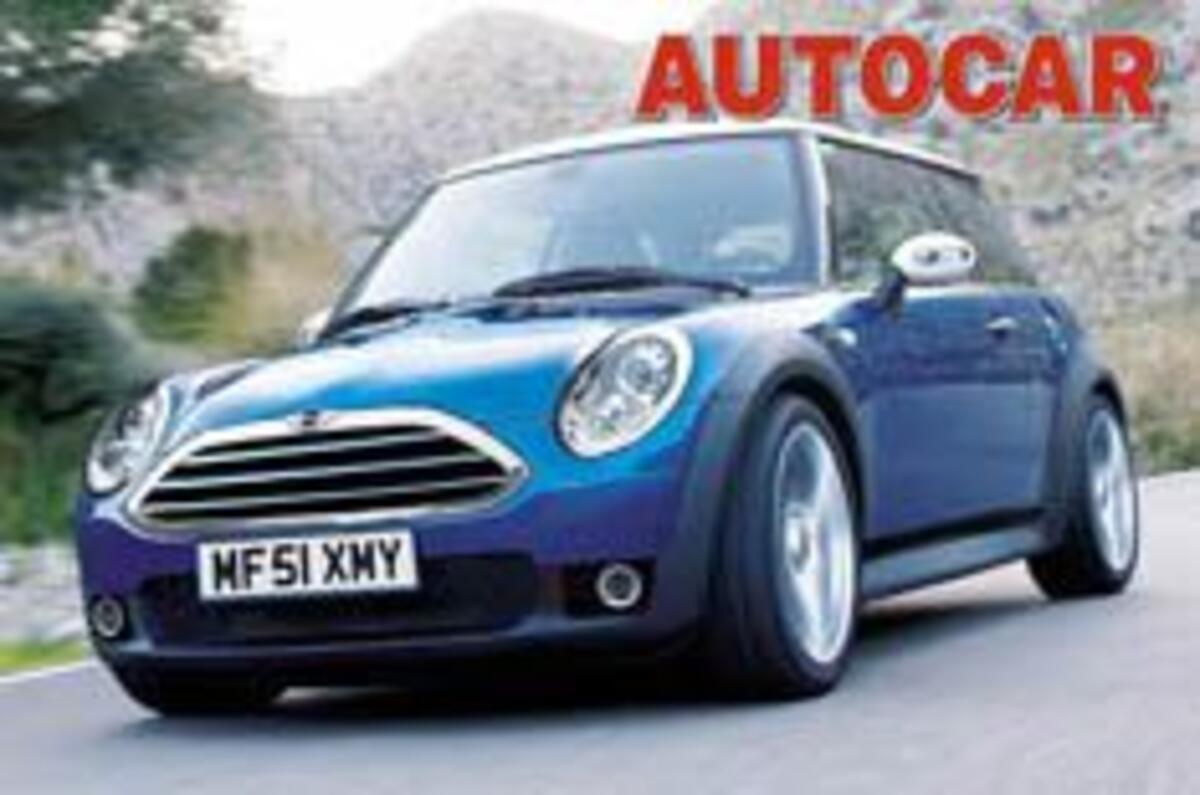A new Mini will go on sale in 2007, with more powerful high-tech engines, smooth new looks and myriad detail changes that should ensure it remains one of Britain’s most desirable small cars. The new all-alloy 1.6-litre twin-cam engines were revealed last week, just over two years before the new car goes on sale.
The engines are part of a carefully-judged makeover of today’s model, with the styling gently evolved from today’s retro look and engineering details changed only where needed.
The mainstay of the range will continue to be a three-door hatchback, with a convertible following shortly after. Other body styles, such as a five-door or estate are still awaiting the green light.
Based on today’s chassis with its front strut and rear multi-link Z-axle suspension, the new Mini will be a similar size to today’s car, growing just a few millimetres in length, width, wheelbase and height. That will keep it at 3.6m long with a 2.4m long wheelbase, ensuring that the wheel-at-each-corner proportions remain.
Designers will also resist the temptation to extend the rear overhang to create a bigger boot. ‘There are always pressures to make a new car bigger, but the Mini has to be small, otherwise it isn’t a Mini,’ said a source.
As a result the interior package will be very similar to the current car’s, with detail changes to components like seats and interior trim squeezing an extra few millimetres of leg, head and shoulder room.
The overall feeling of the cabin will still be a cosy, sporty environment, with design themes such as the central speedo remaining. Interior plastics will be of a much higher grade, however. The windscreen will also stay upright and relatively close to the driver. After exploring new styling directions, including a taller, more conventional supermini-type package, Mini has decided to keep the exterior close to today’s model.
The bonnet line will be higher to incorporate better pedestrian protection, shielding the windscreen wipers below the bonnet line, and also to smooth airflow over the windscreen. The headlights will remain as single, round units. Rumours of a twin-headlight design are dismissed by company insiders as ‘too much like Mercedes-Benz’. The bonnet design itself has been changed. In place of today’s clamshell, which is expensive to make, could be a conventional bonnet with split lines between the headlights and grille – a nod to the original Issigonis Mini.
The front grille has also been redesigned, as can be seen on the prototype pictured overleaf. Deeper and slightly narrower than today’s grille, the three-bar design is a more prominent feature of the face of the new Mini. The shape of the grille is also closer to the original car’s. Significantly, it is more upright than today’s design, to comply with forthcoming pedestrian-impact laws.





Add your comment